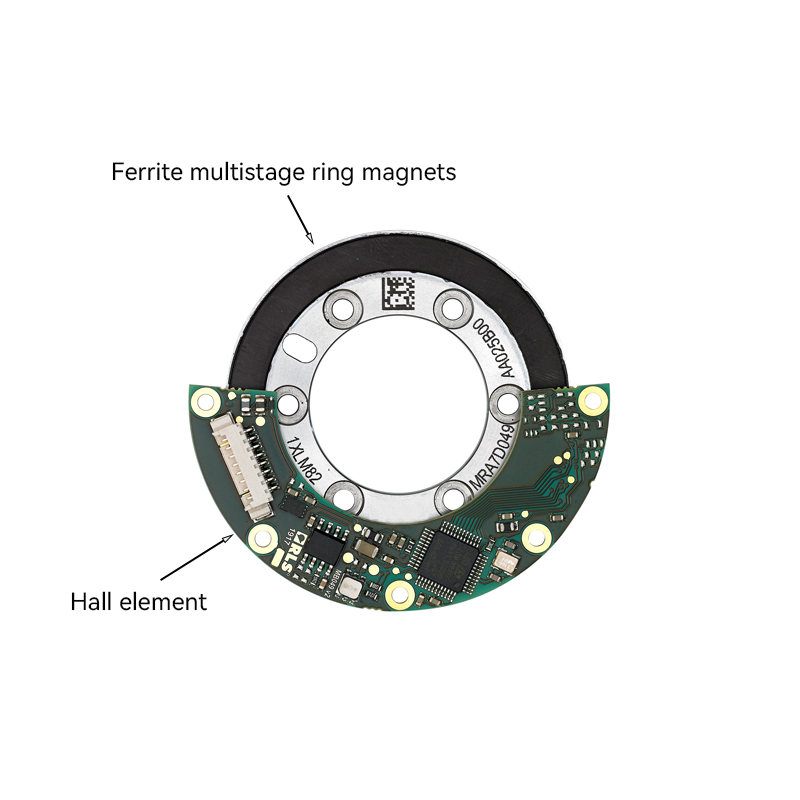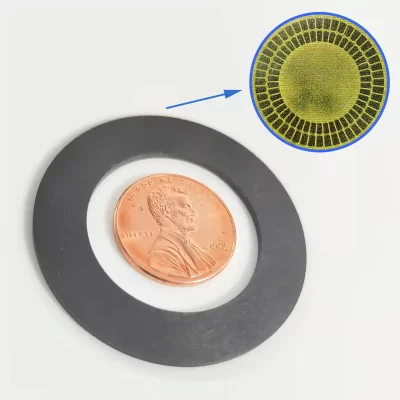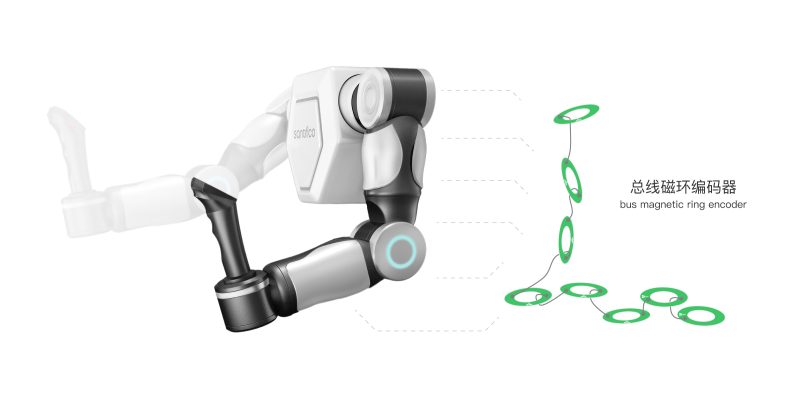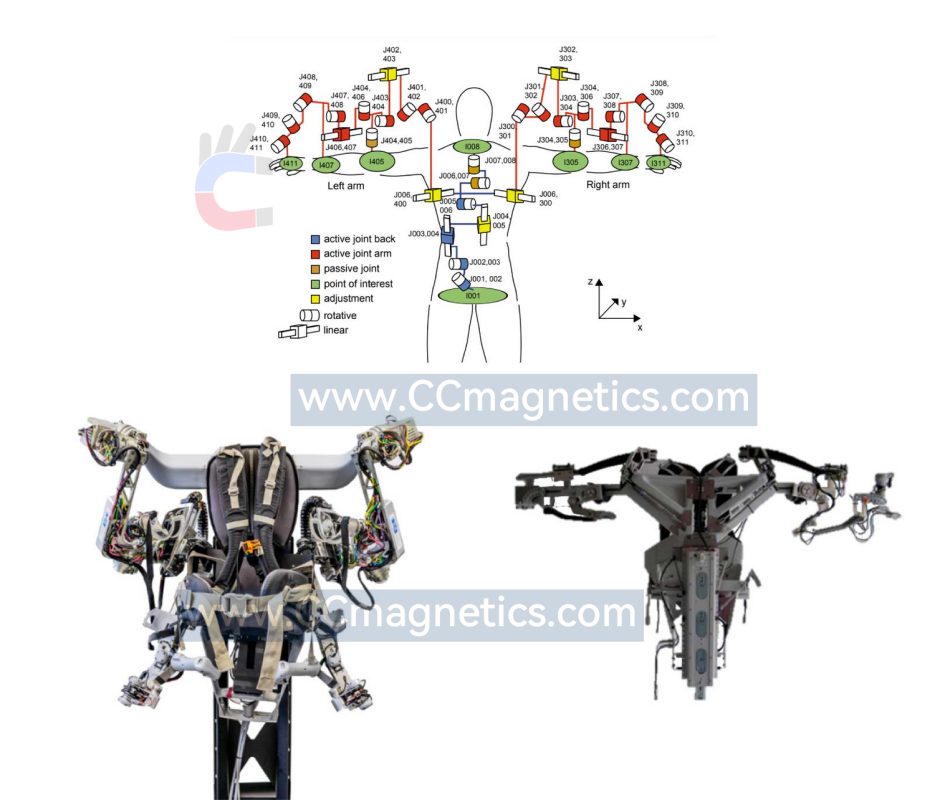What are magnegic encoder?
A particular kind of rotary encoder known as a magnetic encoder uses sensors to detect changes in magnetic fields caused by a spinning magnetized wheel or ring.
A magnetic encoder is made up of three main parts:
Circuit for Sensing
a ring or wheel that spins
a string of magnetic poles arranged in a circle or ring around the object
Depending on the intensity of the magnetic field, the poles create a predictable reaction in the magnetic sensor when the wheel or ring spins past it. The magnetic response is output as a digital signal to the controlling device after being routed via a signal conditioning electrical circuit.
The resolution of the magnetic encoder is dependent on the quantity of magnetized pole pairs on the wheel pole, the number of sensors, and the kind of electrical circuit. The benefit of employing magnetism as a signal-producing component is that it is unaffected by harsh environmental conditions including shock, dampness, dust, and severe temperatures.
Structure of magnetic encoder
The magnetic encoder recognizes changes in the magnetic field as information about rotational position, transforms those changes into electrical signals, and outputs those signals. A permanent magnet plus a magnetic sensor make up the most basic magnetic encoder. The magnetic sensor is fixed in a condition where it is installed on a PCB board at a location where it receives the magnetic field created by the permanent magnet, and the permanent magnet is connected to the tip of a spinning body such as a motor shaft. The magnetic field sensed by the magnetic sensor changes direction when the permanent magnet linked to the motor shaft rotates, and as a consequence the encoder detects the rotational position and speed of the motor shaft.
Ferrite multistage ring magnets for magnetic encoder
Magnetic encoders generally use cylindrical permanent magnets. There are two types of magnetizing directions for permanent magnets: radial direction and plane direction (or axial direction).
As long as the conditions for the magnetic flux density required to operate as an encoder are satisfied, the magnetic material and dimensions can be freely selected.
Generally ,These magnetic rings are divided into single- and double- track magnetic rings. As with ferrite magnetic rings, they are susceptible to breakage, and we have included aluminum alloy bases and magnetic rings in our design. Customers can select between these options.
Since the magnetic encoder has a mechanism to detect changes of the magnetic field, it has an excellent advantage of being robust in an environment contaminated with dust, oil, water, etc. Therefore, it is suitable for use in environments with a lot of dust, oil, and water. For example, magnetic encoders are used in industrial sewing machines used in environments with a lot of lint and machine tools used in environments where cutting oil and water splash.
Advantages and applications of magnetic encoder
The magnetic encoder has the outstanding benefit of being durable in an environment polluted with dust, oil, water, etc. since it contains a mechanism to detect changes in the magnetic field. It may thus be used in areas with a lot of water, oil, and dust. Magnetic encoders, for instance, are employed in machine tools used in circumstances where cutting oil and water splash, as well as industrial sewing machines used in lint-heavy settings.
Another benefit is that a rotation angle sensor IC and a permanent magnet may be used to make an encoder that outputs an absolute angle with a very basic construction. As a result, it is appropriate for applications that call for compactness, lightness, and excellent dependability. For instance, it is used in durable industrial automation equipment and machine tools that utilise small-diameter motors.
In general, magnetic encoders are utilized in applications that prioritize environmental durability, compact size, and high reliability, whereas optical encoders are employed in applications that need high accuracy and resolution. Magnetic encoders are starting to replace optical encoders in the market, nevertheless, due to their increased precision and resolution and compatibility with hollow-through shafts in the most recent models.

 Deutsch
Deutsch Русский
Русский Español
Español Français
Français 한국어
한국어 日本語
日本語



